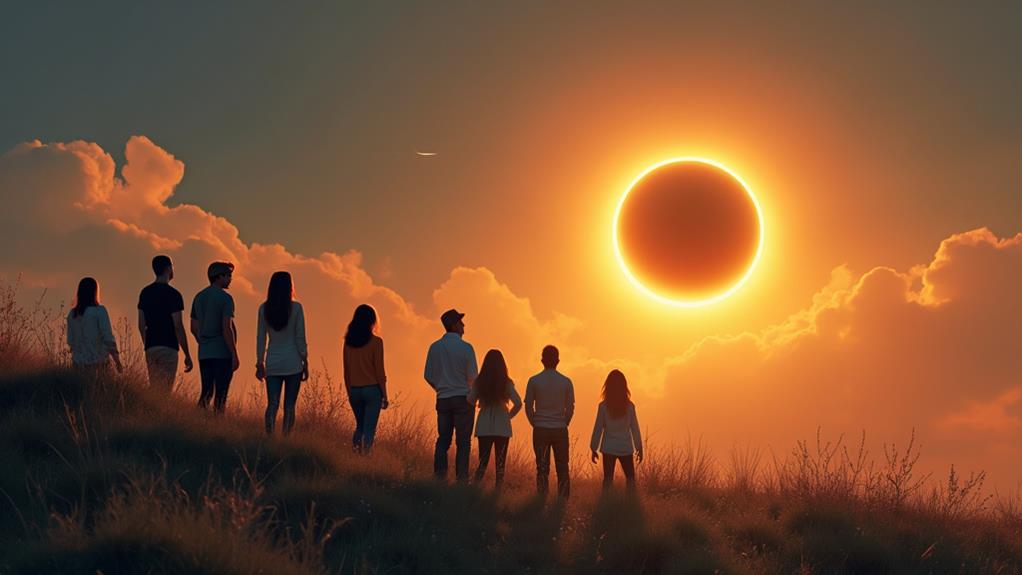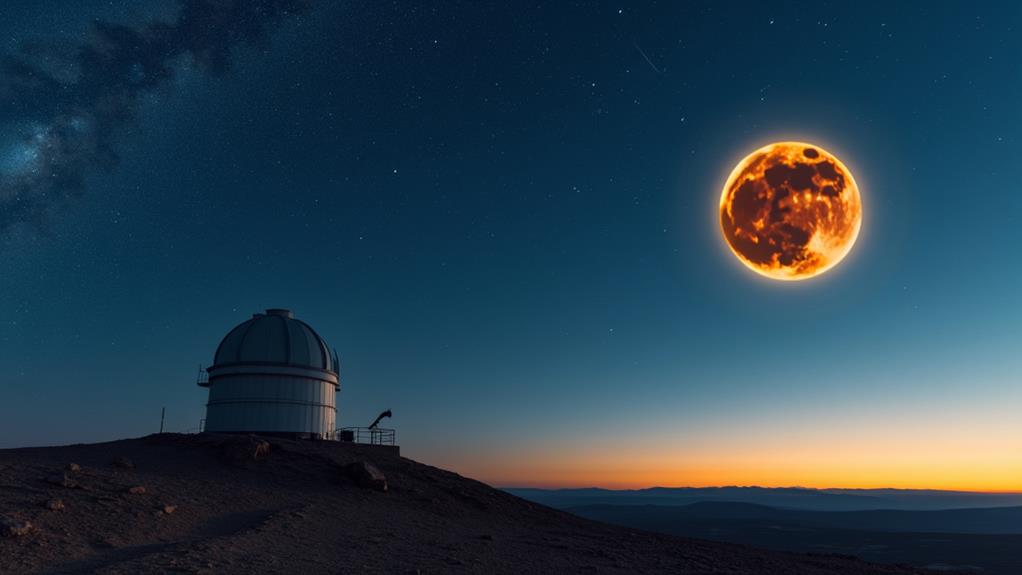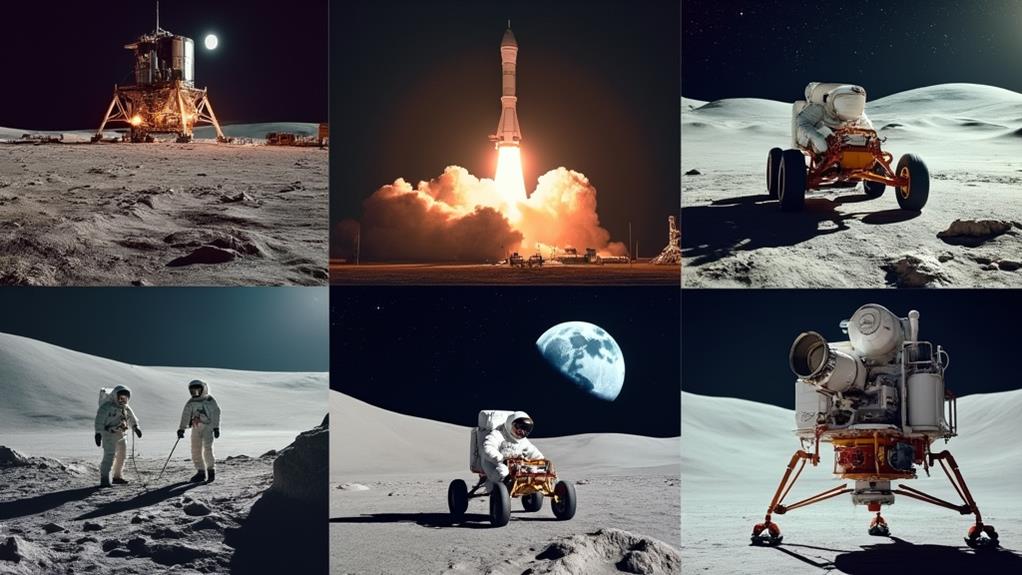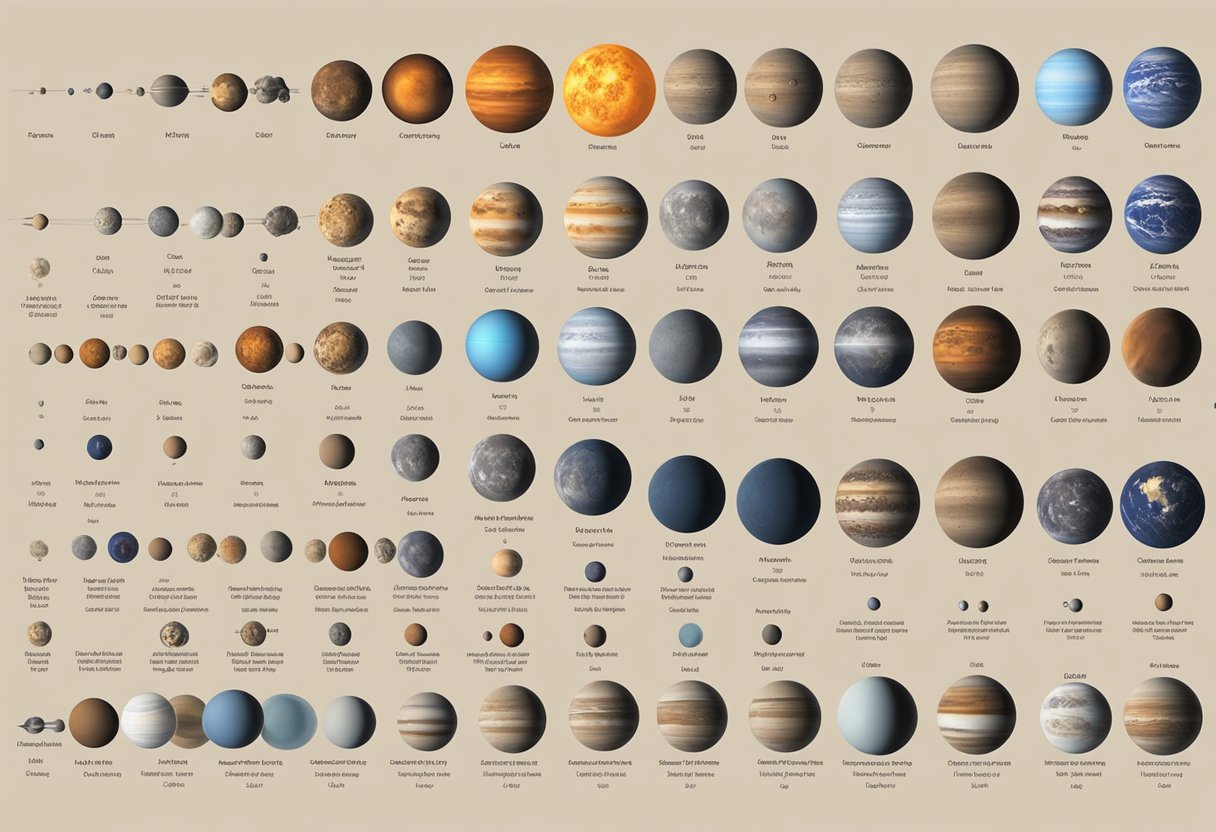Why Are Some Solar and Lunar Eclipses Rare?
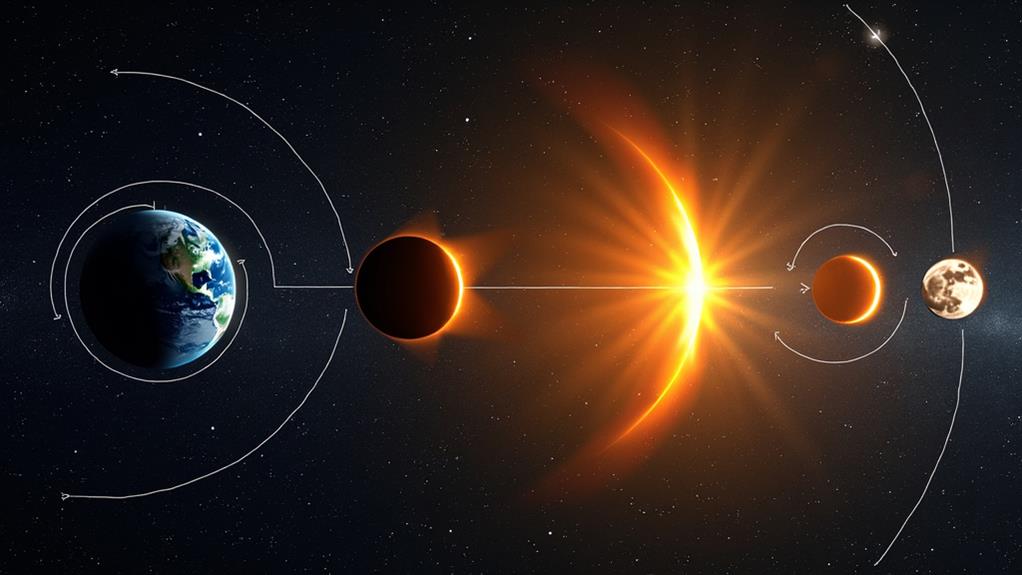
You find some solar and lunar eclipses rare due to the specific celestial alignments and viewing locations required. A solar eclipse needs the Moon to pass directly between the Sun and Earth during a new moon, making total solar eclipses particularly rare for any single spot, only seen every 300-400 years. Lunar eclipses, while more common, still rely on Earth aligning perfectly between the Sun and Moon during a full moon. With Earth's tilted orbit and shadow dynamics, these alignments don't happen often, making eclipses extraordinary events. Stay tuned to learn why these phenomena captivate skywatchers worldwide.
Key Takeaways
- The Moon's orbit is tilted by about 5 degrees, preventing monthly eclipses.
- Total solar eclipses require specific alignments and are visible only within a narrow path of about 480 km.
- Total lunar eclipses need the Earth to be precisely between the Sun and Moon during a full moon.
- Solar eclipses occur globally every 18 months, but a specific location sees them only every 300-400 years.
- Lunar eclipses are more frequent and accessible, occurring 1-3 times per year with easier alignment conditions.
Types of Eclipses
When discussing eclipses, it is vital to understand the different types you might encounter. Solar eclipses are divided into total solar eclipses, annular, and hybrid. Total solar eclipses are the rarest, requiring a precise alignment where the Moon completely obscures the Sun. You'll find these happening globally about every 18 months, but a specific location might only experience one every 300 to 400 years due to the narrow path of totality.
Lunar eclipses, on the other hand, include penumbral, partial, and total eclipses. Total lunar eclipses are more common and visible from anywhere on Earth's night side. The Earth's shadow plays a significant role in these events, with totality often lasting between 30 minutes to over an hour, compared to the brief totality of solar eclipses, which usually last less than 10 minutes at any given spot.
The geometry of eclipses—determined by the Moon's distance from Earth and the plane of orbit—adds to their rarity. Solar eclipses require a precise alignment and have a smaller area of visibility since the Moon's shadow is only about 300 miles wide. Understanding these factors helps appreciate the unique and spectacular nature of eclipses.
Orbital Mechanics
Grasping the intricacies of orbital mechanics is crucial for understanding why eclipses happen. The Moon's orbit around Earth isn't perfectly aligned with Earth's orbital plane around the Sun; it's tilted by about 5 degrees. This tilt means the Moon usually passes above or below the Sun or Earth, preventing eclipses from happening every month.
For a solar eclipse to occur, the Moon must be directly between the Sun and Earth, casting its shadow on our planet. This alignment only happens when the Moon crosses the ecliptic plane at a node during a new moon. These alignments are predictable but infrequent, making solar eclipses rare and viewable only from a narrow path about 300 miles wide.
On the other hand, a lunar eclipse occurs when Earth is positioned between the Sun and Moon, and Earth's shadow falls on the Moon. This happens during a full moon when the Moon crosses Earth's orbital plane. Lunar eclipses are more common and visible from anywhere on Earth where the Moon is above the horizon.
Understanding these orbital mechanics helps explain why some solar and lunar eclipses are rare events, dictated by the precise alignments of celestial bodies.
Alignment Requirements
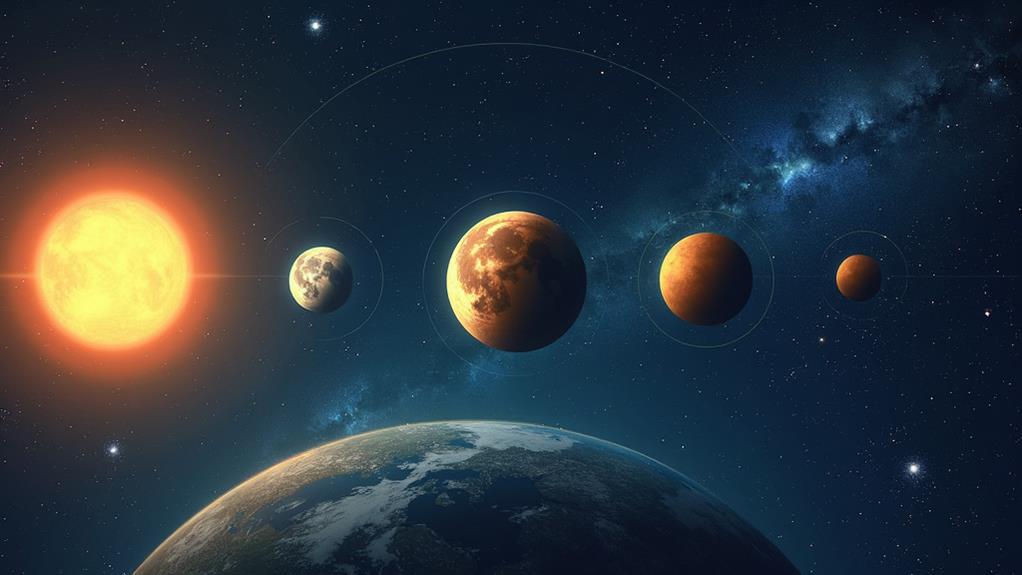
Achieving the precise alignment for an eclipse involves more than just the Moon, Earth, and Sun lining up. For a solar eclipse to occur, the Moon must be in the New Moon phase, directly between the Sun and Earth. However, the Moon's orbit is tilted about 5 degrees relative to Earth's orbital plane. This tilt means the alignment requirements are rarely met perfectly. Often, the Moon's shadow misses Earth, resulting in no eclipse or only partial solar eclipses.
Total eclipses are even rarer. The Moon's shadow during a solar eclipse is only about 480 km (300 miles) wide, creating a narrow path where the total eclipse is visible. This narrow path means experiencing a total solar eclipse from any given location on Earth is a rare event, happening once every 300 to 400 years.
Lunar eclipses, on the other hand, occur only during a Full Moon when Earth is directly between the Sun and the Moon. This allows Earth's shadow to fall on the Moon. These eclipses are more frequent, averaging 1 to 3 times a year, since Earth's shadow is larger and the alignment requirements are easier to meet.
Viewing Locations
Viewing locations for eclipses vary greatly depending on if you're observing a solar or lunar eclipse. If you're aiming to see a total solar eclipse, you need to be in a very specific location on Earth. These events are visible only from a narrow path about 480 km (300 miles) wide. This narrow path of visibility makes solar eclipses rare for any single location; you might wait 300-400 years to see one from the same spot. The alignment of the Sun and Moon required for a total solar eclipse is also less frequent due to the Moon's 5-degree orbital tilt relative to Earth's orbit.
On the other hand, lunar eclipses offer much broader visibility. You can see a total lunar eclipse from anywhere on Earth where the Moon is above the horizon. This means a larger audience can witness the event, making it more accessible compared to solar eclipses. If you're on the night side of Earth during a lunar eclipse, you have a good chance of observing it. The difference in viewing locations for these celestial events explains why total solar eclipses are rarer compared to total lunar eclipses.
Frequency of Eclipses
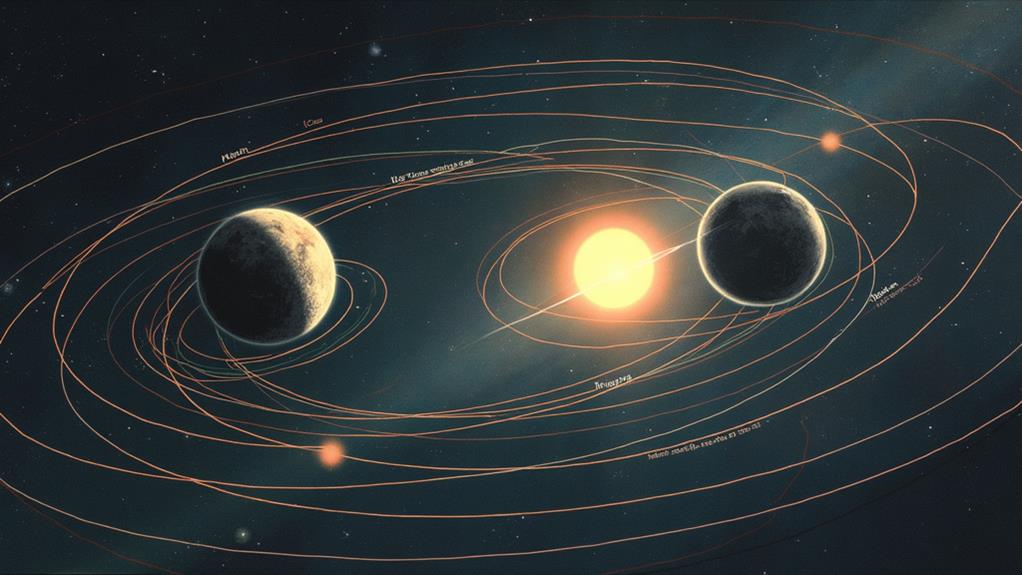
While the specific locations for viewing solar and lunar eclipses differ greatly, the frequency of these celestial events is another intriguing aspect. Solar eclipses and lunar eclipses occur in roughly similar numbers, averaging about two each per year. You might experience variations, with solar eclipses ranging from one to five annually. However, the Moon's tilted orbit means that eclipses don't happen at every new or full moon phase, making these events relatively rare.
The phenomenon occurring due to the alignment of the Sun and Earth is fascinating. For instance, total solar eclipses are less frequent at any specific location, typically happening once every 300 to 400 years. In contrast, a total lunar eclipse can be seen from anywhere the Moon is above the horizon, making them more accessible.
Consider these points:
- Solar eclipses: 1-5 per year.
- Lunar eclipses: Similarly frequent.
- Total lunar eclipse: Visible from more locations.
- Moons distance from Earth: Affects eclipse types.
From 2001 to 2100, you can expect 224 total eclipses, with 144 being central (total or annular). This slight increase in frequency compared to the previous century adds another layer to the intrigue.
Duration and Visibility
When considering the duration and visibility of eclipses, total solar eclipses stand out for their rarity and brief spectacle. These events are rare because the Moon's umbra, or the area of total shadow cast, is only about 150 km wide. This narrow path of totality means a total solar eclipse is visible from a limited geographic area on Earth. On average, you might experience a total solar eclipse at any specific location only once every 300 to 400 years.
In contrast, lunar eclipses are more frequent and can be seen from anywhere the Moon appears above the horizon. This broader visibility allows a larger audience to witness the event compared to solar eclipses. Total lunar eclipses can last several hours, with the phase of totality averaging between 30 minutes to over an hour, providing a longer viewing opportunity than the brief minutes of a total solar eclipse.
The alignment required for a solar eclipse is less frequent because of the Moon's tilted orbit, often causing it to pass above or below the Earth's shadow during full moons. Earth's atmosphere also plays a role, refracting sunlight and adding to the spectacle of lunar eclipses.
Historical Records
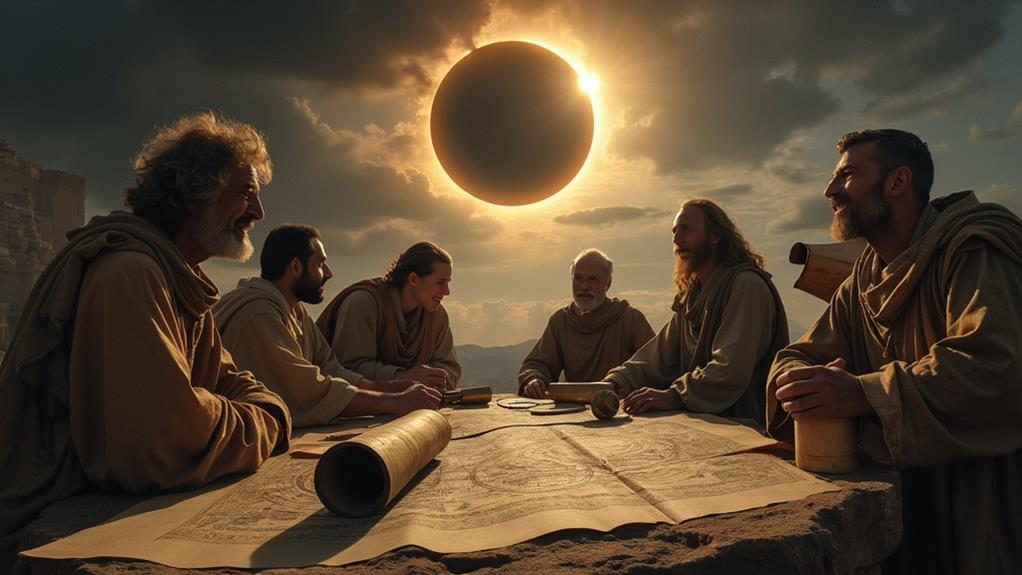
Historical records of eclipses have illuminated the sophistication of ancient civilizations' astronomical knowledge. These records show that civilizations were keenly aware of the rare alignment of the Sun and the Moon. Eclipses are much more frequent globally than they are for any specific location. For example, total solar eclipses occur approximately every 18 months worldwide, but you might only see one in your hometown once every 300-400 years.
Ancient civilizations carefully documented these events, which helped them develop advanced calendars and improve their understanding of the cosmos. The rarity of perfect alignment, where the apparent size of the Moon matches that of the Sun, means that an eclipse can only occur along a narrow path on Earth's surface.
- From 1901 to 2000, 228 total eclipses were recorded, with only 145 being central.
- The 20th century experienced a significant number of eclipses, indicating a trend of increasing frequency.
- The geometric differences between the Moon and Earth's shadows contribute to the limited visibility of total solar eclipses.
- Ancient texts often highlight eclipses as crucial events that influenced cultural and scientific advancements.
These historical records underscore the awe and respect ancient civilizations had for these celestial phenomena.
Future Predictions
You don't need a crystal ball to predict future eclipses; modern science has got you covered. Using celestial mechanics and historical data, scientists can forecast solar and lunar eclipses with impressive accuracy. For instance, total solar eclipses occur about 66 times per century globally, making them relatively rare. The next time we'll see five solar eclipses in a single year will be 2206, which underscores how rare such events are.
Lunar eclipses, on the other hand, happen more frequently, averaging two per year. However, total lunar eclipses are less common because a specific alignment during a Full Moon is required. The Moon's diameter plays a significant role in these events. As it's much smaller than the Sun's, precise positioning is vital for an eclipse to occur.
Interestingly, as the Moon gradually recedes from Earth, total solar eclipses will become impossible in a few million years. We'll only witness annular solar eclipses wherever the Moon's diameter appears much smaller than the Sun's. By relying on systems like the Saros cycle, which uses historical data, we can predict these celestial phenomena far into the future accurately.
Frequently Asked Questions
Why Are Solar and Lunar Eclipses so Rare?
You might wonder why solar and lunar eclipses are so rare. It's all about eclipse cycles and celestial mechanics. The Moon's tilted orbit causes infrequent orbital alignment. Shadow paths are very narrow, affecting eclipse visibility. Solar eclipses last just minutes, while lunar eclipses can stretch to hours. Visibility factors and the historical significance of observed patterns, like the Saros cycle, help predict but don't guarantee frequent eclipses at any given location.
What Is the Rarest Type of Eclipse?
The rarest type of eclipse is the hybrid eclipse. You won't see these often in eclipse history, with only 1-2 occurring every 1,000 years. Hybrid eclipses shift between total and annular, making eclipse viewing especially unique. Because of their rarity, eclipse myths and eclipse photography are both enriched by these events. The next hybrid eclipse will be in 2031, so mark your calendars for this extraordinary celestial event!
Why Are Solar Eclipses Not More Common?
You know the saying, "Timing is everything"? That's especially true for solar eclipses. Their rarity comes from the precise solar alignment needed. The Moon's shadow is narrow, and the Earth's orbit adds to the complexity. Geometric configurations have to be just right, and celestial mechanics limit where and when you can see them. Eclipse duration and visibility factors also play a role, making these events a rare spectacle.
Why Do They Say Eclipses Are Rare?
They say eclipses are rare due to eclipse frequency and the specific celestial alignment required. Orbital mechanics dictate that the narrow shadow paths and eclipse cycles limit how often and where you can see them. Observational limits and historical records show that total solar eclipses are particularly uncommon, happening once every 300-400 years at a given location. The Moon's tilted orbit further reduces the chances of witnessing these events.

